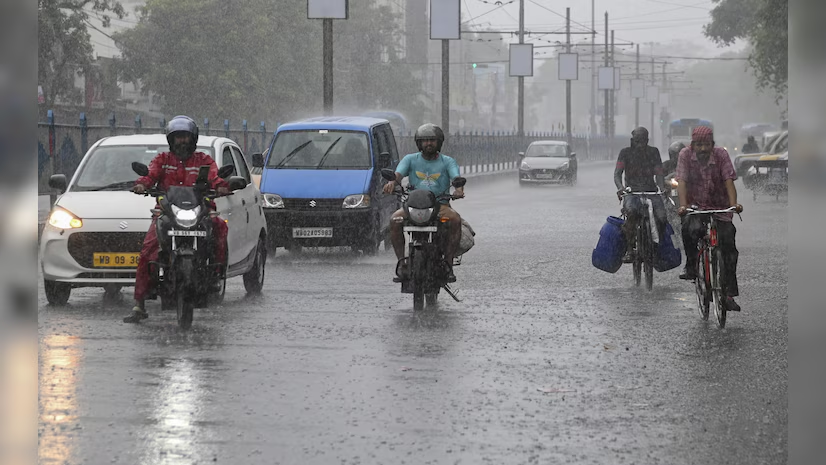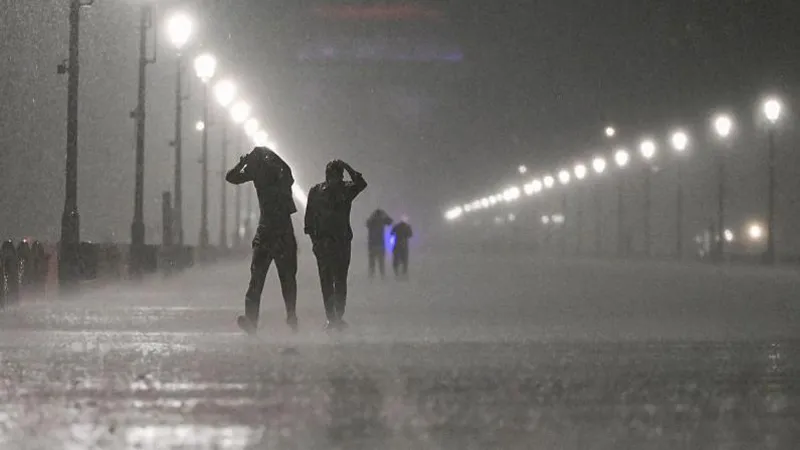Did India Record the Highest Rainfall in May?
Maharashtra recorded its wettest May since 1990, with 74.6 mm of rainfall, an 844% surplus. Pune district led with 119.6 mm, breaking a 1901 record.

Heavy pre-monsoon showers caused flooding and damaged 30,000 hectares of crops. Meteorologists predict more heavy rain, potentially surpassing the 1990 record of 113.6 mm from 1918. Historically, May rainfall in Maharashtra averages 10-20 mm, making this year exceptional.
Delhi’s Record-Breaking December Rainfall
Delhi saw 42.8 mm of rain in December 2024, the highest in 27 years. A single day recorded 41.2 mm, the most in 24 hours since 1923’s 75.7 mm. An active western disturbance and cyclonic circulation triggered the deluge. Waterlogging disrupted traffic and daily life. The city’s usual December rainfall is just 8 mm, highlighting the anomaly.
Bengaluru’s 12-Hour Deluge
Bengaluru faced 130 mm of rain in 12 hours on May 19-20, 2025, causing chaos. Three deaths were reported, 500 homes flooded, and 20 lakes neared overflow. Converging low-pressure systems and thunderstorms drove the heavy rainfall. Streets turned into waterways, and traffic halted for hours. This event marks one of Bengaluru’s worst flooding incidents in recent history.
Historical Rainfall Records in India
India’s rainfall records show significant variation. Maharashtra’s 1918 May record stood at 113.6 mm until 2025’s surge. Delhi’s 1923 December record of 75.7 mm held for a century.
Monsoon seasons typically deliver 80% of India’s annual rainfall, with 2024 recording a 6.1% surplus at 905.6 mm. Key agricultural states like Punjab and Bihar often face deficits, impacting crops. Extreme weather events, like Kerala’s 2018 floods, have set benchmarks for modern records.
Climate Patterns
Recent rainfall spikes stem from cyclonic circulations and western disturbances. The 2025 southwest monsoon arrived early on May 30, covering India by July 2. Forecasts predict above-normal monsoon rainfall for 2025, especially in Maharashtra and Madhya Pradesh.
However, erratic patterns, with intense rain in short bursts, challenge agriculture and infrastructure. Climate change is increasing the frequency of such extreme weather, raising concerns for urban planning and disaster preparedness.

India’s recent rainfall records reflect a mix of natural weather patterns and climate change impacts. Maharashtra’s 2025 May rainfall shattered a decades-old record, driven by unusual pre-monsoon activity.
Pune’s 119.6 mm surpassed its 1901 benchmark, causing widespread crop damage. Delhi’s December 2024 downpour, fueled by a western disturbance, marked a rare winter event. Bengaluru’s May 2025 flooding highlighted urban vulnerabilities, with low-pressure systems amplifying rainfall. These events contrast with historical norms, where May and December typically see minimal rain.
Past Rainfall Trends
India’s monsoon, from June to September, dominates annual rainfall, contributing 80% of the total. The 2024 monsoon delivered 905.6 mm, a 6.1% surplus, the highest since 2020. However, regional variations persist—Punjab and Bihar faced deficits, while Gujarat saw 71% excess rain. Historical highs include Kerala’s 2018 floods, which killed hundreds, and Mumbai’s 2005 deluge, with 944 mm in a single day. These events set a precedent for extreme rainfall, but 2025’s records indicate rising intensity.
Impact of Recent Rainfall
The 2025 rainfall events caused significant disruption. In Maharashtra, 30,000 hectares of crops were damaged, affecting farmers’ livelihoods. Bengaluru’s 130 mm downpour led to three deaths and flooded 500 homes, exposing infrastructure gaps. Delhi’s December 2024 rain caused waterlogging and traffic chaos, with 13 flood-related deaths reported nationwide in 2024. These incidents underscore the need for better urban drainage and disaster response systems.
Climate Change Connection
Experts link these extreme rainfall events to climate change, which intensifies weather patterns. Cyclonic circulations, like those over the Arabian Sea in May 2025, and western disturbances are becoming more frequent.
The early onset of the 2025 monsoon and its projected above-normal rainfall signal shifting climate dynamics. This trend threatens agriculture, with crops like cotton already hit by excess rain in 2024, leading to a 7.4% production drop.
The India Meteorological Department (IMD) predicts continued heavy rainfall in 2025, particularly in southern and western India. Urban areas like Mumbai and Bengaluru face growing flood risks, necessitating infrastructure upgrades.


 Bilawal lauds journalists, Gen Z for exposing India’s narrative
Bilawal lauds journalists, Gen Z for exposing India’s narrative  Trump’s 25% Tariff Threat Sparks Major Political Storm in India
Trump’s 25% Tariff Threat Sparks Major Political Storm in India  Trump’s $21M USAID Claim for India Elections Never Existed
Trump’s $21M USAID Claim for India Elections Never Existed  Did India Strike Pakistan’s Nuclear Hub Kirana Hills?
Did India Strike Pakistan’s Nuclear Hub Kirana Hills?  What’s Happening in Iran: India Urges Citizens to Exit
What’s Happening in Iran: India Urges Citizens to Exit  Why Did Bangladesh Choose Mangoes for PM Modi?
Why Did Bangladesh Choose Mangoes for PM Modi?